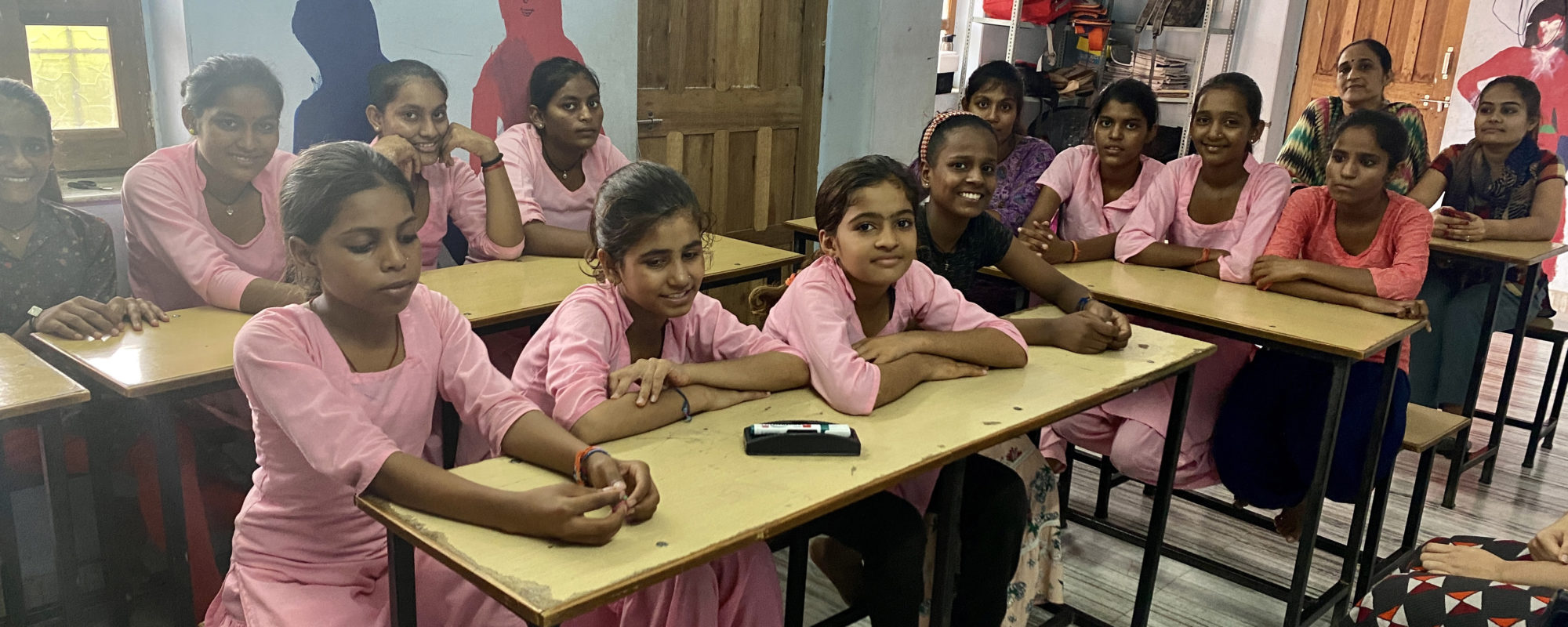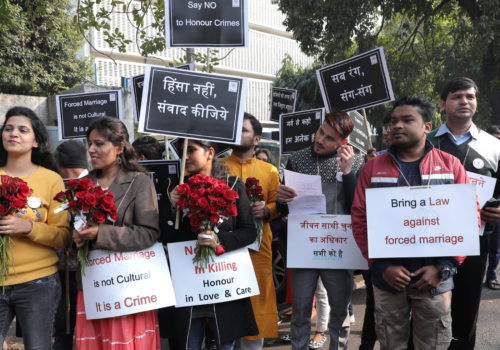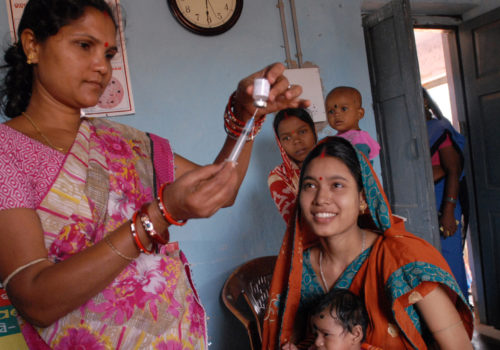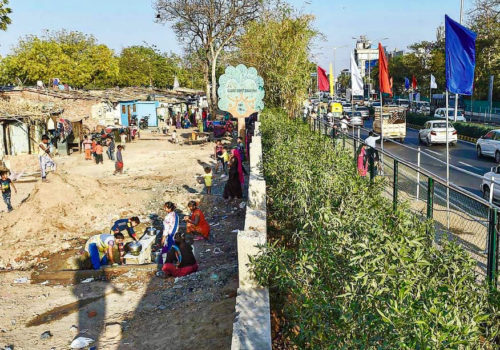JAISALMER, India — In 2018, two Americans arrived in this western frontier city of Rajasthan, once a flourishing trading center on the Silk Road near what’s now the border of Pakistan, and drove some 30 miles to inspect barren land in the Thar Desert. Soon after, the area was sealed off for construction, and an alien-like structure slowly began emerging from the ground. It was an oval-shaped building, with layers of yellow sandstone and lattice screens to keep out the sweltering heat. Local residents assumed it was another luxury hotel, given much of the city’s income comes from tourism. But when they were told that it was a school—for girls, no less—they were astounded. Most wondered why.
Most girls in Jaisalmer drop out of school by the age of 15. Often from the age of three or four, they are already “promised” to their future husbands’ families and married by sixteen. Building a school seemed like a waste of resources. “The girls need to help out at home,” Heera Singh, a local villager, told me. “Why not send our boys here instead?”
But Rajasthan is in particularly dire need of educating its girls. Last year, a national survey reported the state has the lowest literacy rate for women and girls in the country. Forty-four percent over the age of five have never had any formal education, despite the state government’s introduction of several education schemes and policies to address the gap. But with schools shutting down and classes moving online due to the pandemic last year, the situation has only worsened. Among families that have mobile phones and internet access, priority is usually given to boys while girls tend to the household chores. When both parents are unemployed, it is not unusual for girls to begin working in bangle factories and garment workshops to help support their families.
Against this backdrop, the Rajkumari Ratnavati Girls School was finally ready to open its doors last February with the aim of educating 400 girls from kindergarten to tenth grade. Most girls reside in the village of Kanoi, where many families live below the poverty line and female literacy barely reaches 32 percent. Stalled by the pandemic, the school has been slow to fully open. When I visited this September, classes had not yet begun, but plans to reopen were underway: Michael Daube, the founder of the Citta foundation that is behind the initiative, and Diana Kellogg, the architect, would soon arrive in the city from the United States. The program manager, Chahat Jain, was busy designing and implementing fellowships to be awarded to 30 girls.
The school is part of a larger project, Jain said: there would also be a handicraft center that would teach women how to sew and make garments, and a textile museum and exhibition space that would enable them to sell their work. “It’s so we can become self-sustainable in the future,” he told me, adding that the girls in Kanoi were excited to attend. “They can’t believe a whole school has been built just for them!”
In the absence of any community centers and very few existing government schools in the city center, those who live in dhanis, villages on the outskirts of the remote city, typically have no desire to send girls to school. Villagers are also often segregated by caste or occupation. They prioritize work from a young age, which means that hardly any graduate from school or college.
“They don’t value education because they don’t see how it can transform their lives,” Jain said. Even to the girls, marrying early seems like common sense, he added. “What else are they supposed to do?”
* * *
At the beginning of the millennium, India began making huge advances enabling girls to escape poverty, child marriage and abuse. In 2006, almost half of women between 20 and 24 had been married by the age of 18. By 2016, that number fell drastically to 27 percent. At the same time, more girls were enrolling in school after the country legally established the right to education in 2009.
During that time, some states found creative ways to improve the situation. In eastern Bihar, the government provided bicycles to girls in poorer regions who had to travel longer distances to get to school. In four years, the number of girls enrolled in school increased from 175,000 to 600,000. By 2018, the school drop-out rate for women was lower than men for the first time, brought about by a declining poverty rate, expanded school infrastructure and changing social attitudes.
The pandemic has dramatically affected this critical progress. Some 1.6 million girls aged 11 to 14 are currently out of school, and 10 million girls in total could drop out because of Covid-19, according to the Right to Education Forum, a platform of national education networks from across India. The risk of girls falling victim to child marriage, trafficking and gender violence is especially high in populous states with rural areas and low-income communities, like Bihar, Madhya Pradesh, Uttar Pradesh and Rajasthan.
Providing access to education through technology such as phones or computers is difficult as many families say they fear girls use the devices to talk to boys and rebel against their parents’ wishes. Only 26 percent of girls can access phones, compared to 37 percent of boys, according to a survey conducted by the Malala Fund, an international NGO advocating for girls’ education. The survey also found that although the government said it would broadcast curriculum-based lessons on television in states like Bihar, Assam, Uttar Pradesh and Telangana, only 11 percent of the 3,176 children surveyed across the country were able to access them. In Rajasthan, another joint study by the Institute of Development Studies and Development Solutions found that less than 11 percent of girls have been able to attend online classes, with many spending more hours doing household chores during nationwide Covid-19 restrictions last year.
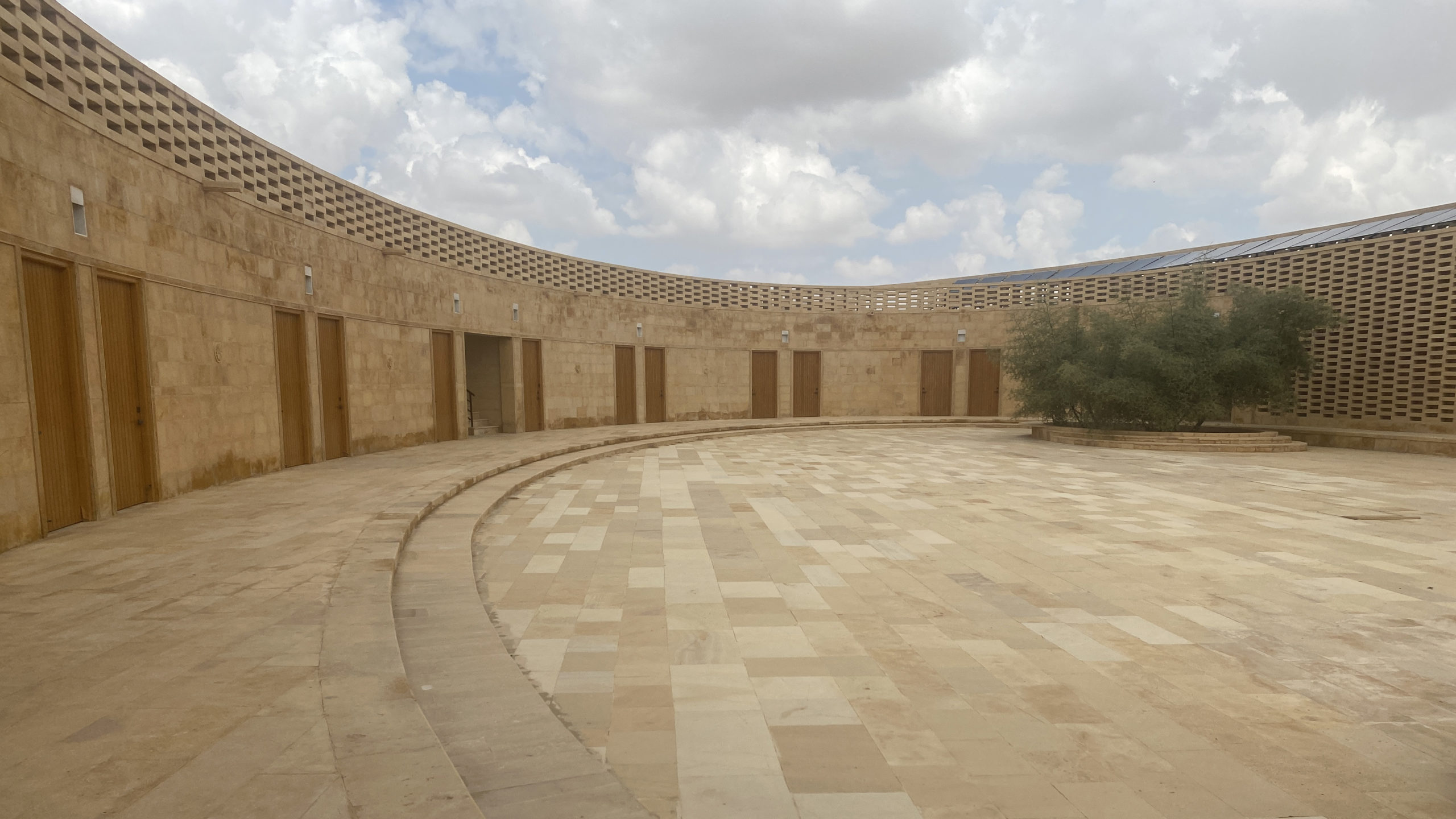
School closures have led many to feel stuck in limbo, with growing uncertainty over their futures. It’s likely those who drop out will never return, experts say. Families often see marriage or work as the only way to bounce back from household poverty. UNICEF warned in 2019 that 10 million girls around the world were at risk of becoming child brides in the next decade; with every third child marriage taking place in India, the country is now the biggest contributor to the global problem.
There’s little hope for improvement on the immediate horizon. When the government presented its annual federal budget earlier this year, it slashed education by 6 percent from the previous year. At a time when funding is seen as crucial for boosting girls’ education, the budget of the National Scheme for Incentives to Girls for Secondary Education was also cut from $1.3 million in 2020-21 to just $136,000 for next year.
In Jodhpur, another city in Rajasthan 175 miles south of Jaisalmer, 22-year-old Monica was busy filing away paperwork at the offices of the Sambhali Trust, a non-profit charitable organization she has called home since she was a child. “Whenever there’s any tension at home, I come and stay here,” she said.
Monica first came at the age of 10 to learn to sew, a skill her family hoped could get her a job to earn for the family. She had been pulled out of school by her father, a daily wage laborer who couldn’t afford to pay her school fees. But her attention quickly turned to the English and math classes being taught by volunteers at Sambhali. “School was always my favorite,” she said. “I always loved sitting in class, reading books.”
She eventually received a scholarship from the organization to continue her studies. But when she told her family the good news, she was met with disapproval. “My mother, siblings, uncles and aunts all insisted that I stay at home and learn the housework,” she said. With her father’s permission, she was finally able to continue with her studies. “I can’t pay for her education, but I won’t stop others from letting her have it,” she recalled him saying.
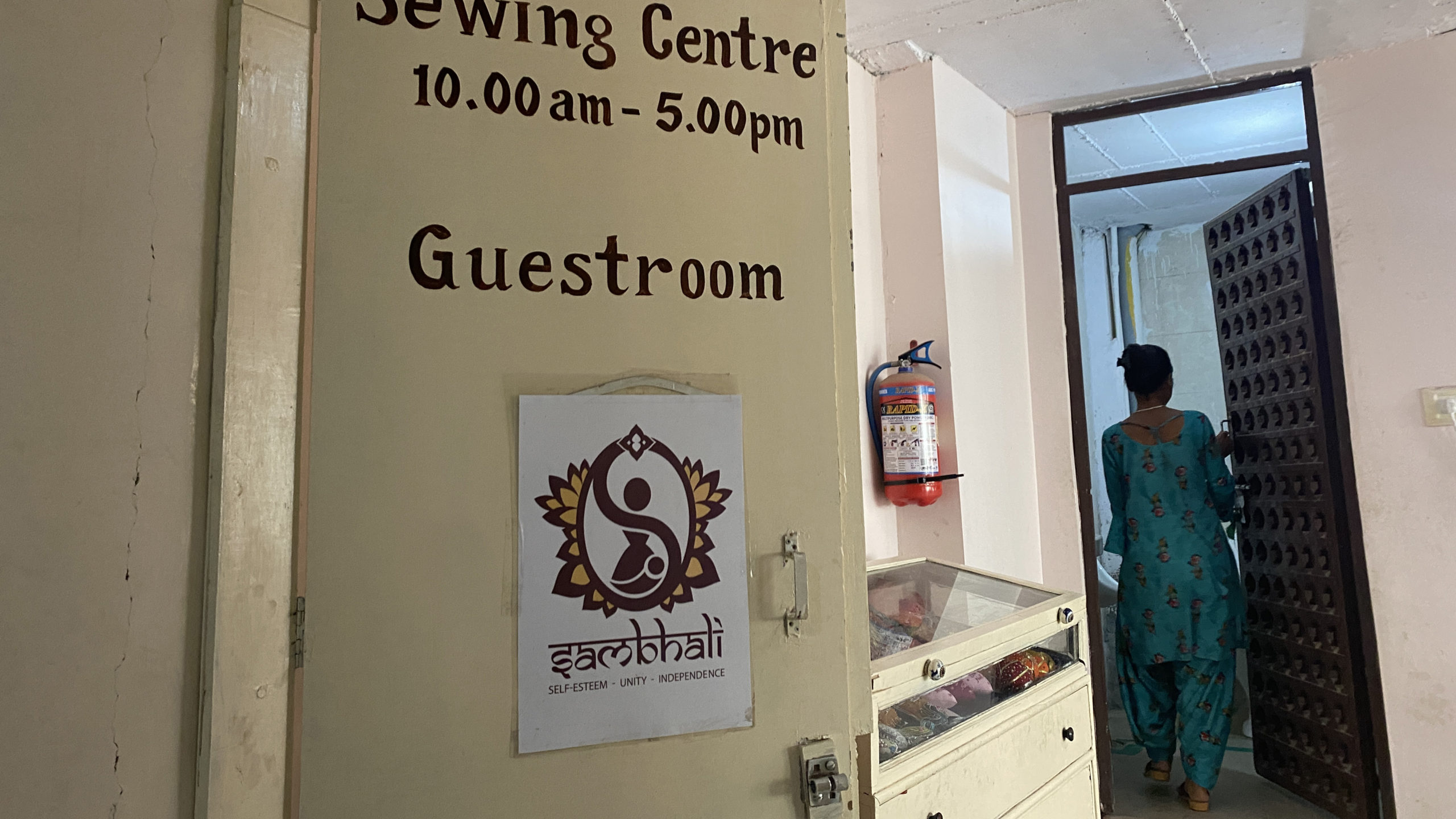
The decision changed the trajectory of Monica’s life: Today, she’s a high school graduate with a diploma in management who is now studying law. It’s a huge accomplishment especially considering that she belongs to a community known as the Scheduled Castes and Scheduled Tribes, on the margins of India’s rigid caste system.
That system has deterred children from going to school: over 50 percent of Dalit children drop out of school, especially girls, whose enrollment ratio has always been low. “Providing these families with the monetary means for enrollment will bring more children back to school, and the greatest impact would be felt by females on the edge of dropping out,” Monika Chaudhary, a public health faculty member at Johns Hopkins University, wrote in the East Asia Forum.
Monica is broad-shouldered, with acne-dotted skin and jet-black hair that falls past her shoulders. The day I met her, she was mostly laser-focused on poring over accounting files as a part-time office clerk for Sambhali, quietly running numbers in her head. Most of the girls with whom she attended school nearly fifteen years ago are now married with children. “They sometimes ask what I’m doing with my life,” she said. “I don’t speak with them very often.”
When she described her relationship with her family, rage was evident. The pressure from her mother and siblings to quit school and get married began mounting again five years ago, when her father died. “There was no one to fight them since he was no longer around,” she said.
Govind Singh Rathore, who founded Sambhali, said the attitude is common in communities such as Monica’s for a simple reason: “If you’re poor, you try to get rid of anything you think is a liability.”
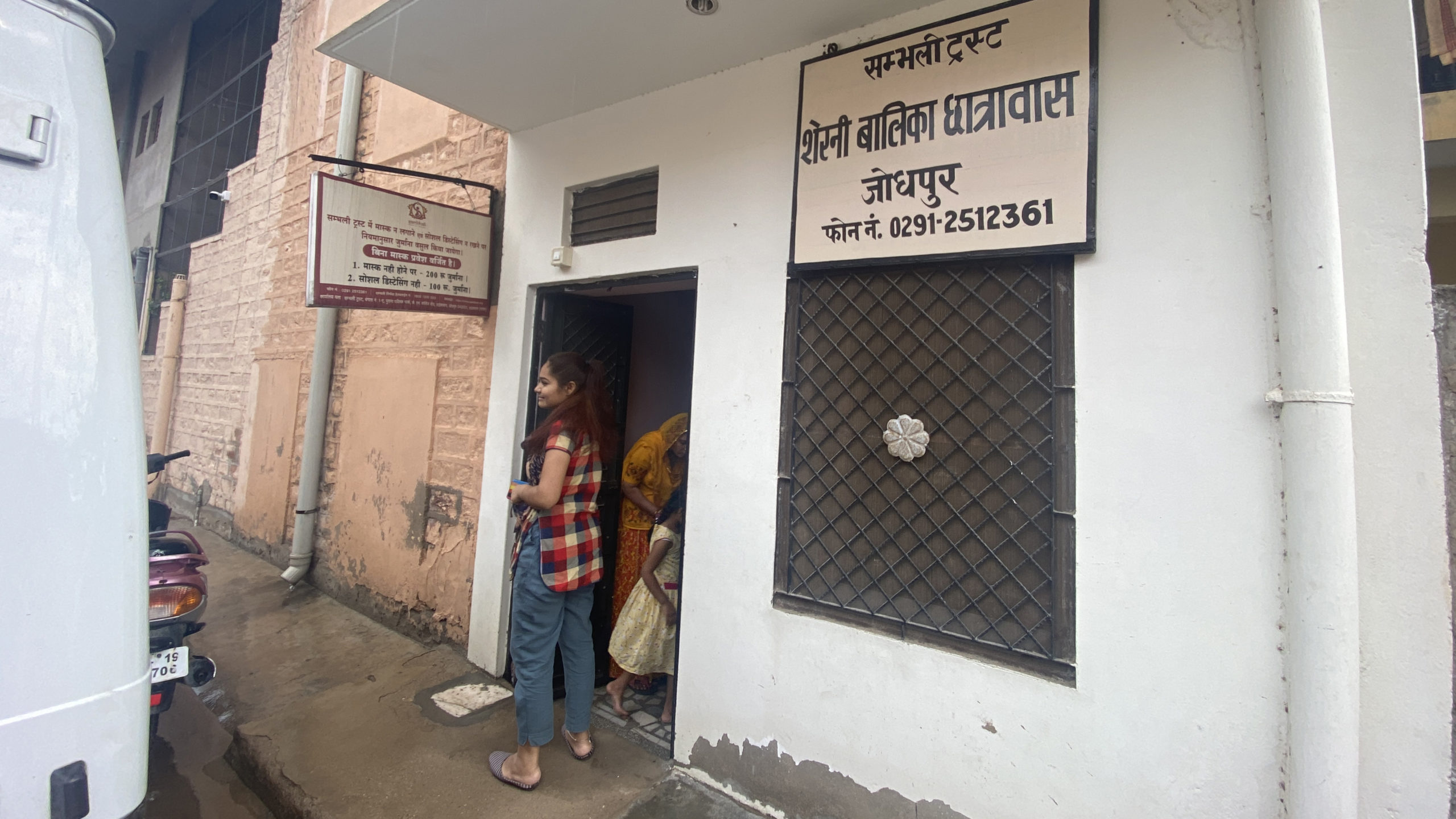
Even Monica’s younger brother, who was encouraged to become the head of the family, tried to stop her. Arguments often escalated into bullying and domestic violence. A 6 p.m. curfew was imposed on her, and when she bought her first mobile phone with her own savings, he grabbed it and threw it to the ground, smashing it to pieces. “He was suspicious and didn’t think I deserved to have it,” she said.
Families often see freedom for girls as an invitation to engage in socially unacceptable behavior, Rathore said. “The family wants her to be seen as worthy of marriage.”
Monica continues to resist marriage, and contributing earnings from her part-time work has helped alleviate some pressure from her family members. Although they no longer see her as just another mouth to feed, she is frustrated by what she sees as their lack of respect and encouragement.
She is resolved to become a lawyer. “The things I see in my family—the way they hold women back and don’t let them progress—I want to stop that from happening to others,” she said.
* * *
Schools in Jodhpur were allowed to reopen on September 3 for the first time since March 2020. In the neighborhood where I was staying, however, most remained closed. When I asked residents about sending their children back to class, reactions were mixed. “Will it make a difference, what if they are shut down again?” a villager named Mukta Devi said.
Inside the Laadli Boarding Home, however, children were bouncing off the walls with excitement. “English is my favorite subject, I missed school so much!” 8-year-old Lalita said. Dressed in cranberry pink uniforms, girls were giddy as they piled into a classroom and sat down on its benches. They had just finished eating lunch, excited to meet a new visitor. “We’ve just been sitting here watching TV because school was closed,” 11-year-old Anamika told me.
The boarding home was set up by Sambhali in 2017 to enable girls in Setrawa village, 50 miles west of Jodhpur in the desert, to attend school while living at a family-run establishment. The home houses girls between the ages of six and 12 before they move into another boarding home for older girls. Upstairs, a classroom with a blackboard is surrounded by bunkbeds where the girls sleep. A tutor comes to teach and run workshops with the girls every day, while downstairs, a housemother cooks hot meals along with three volunteers.
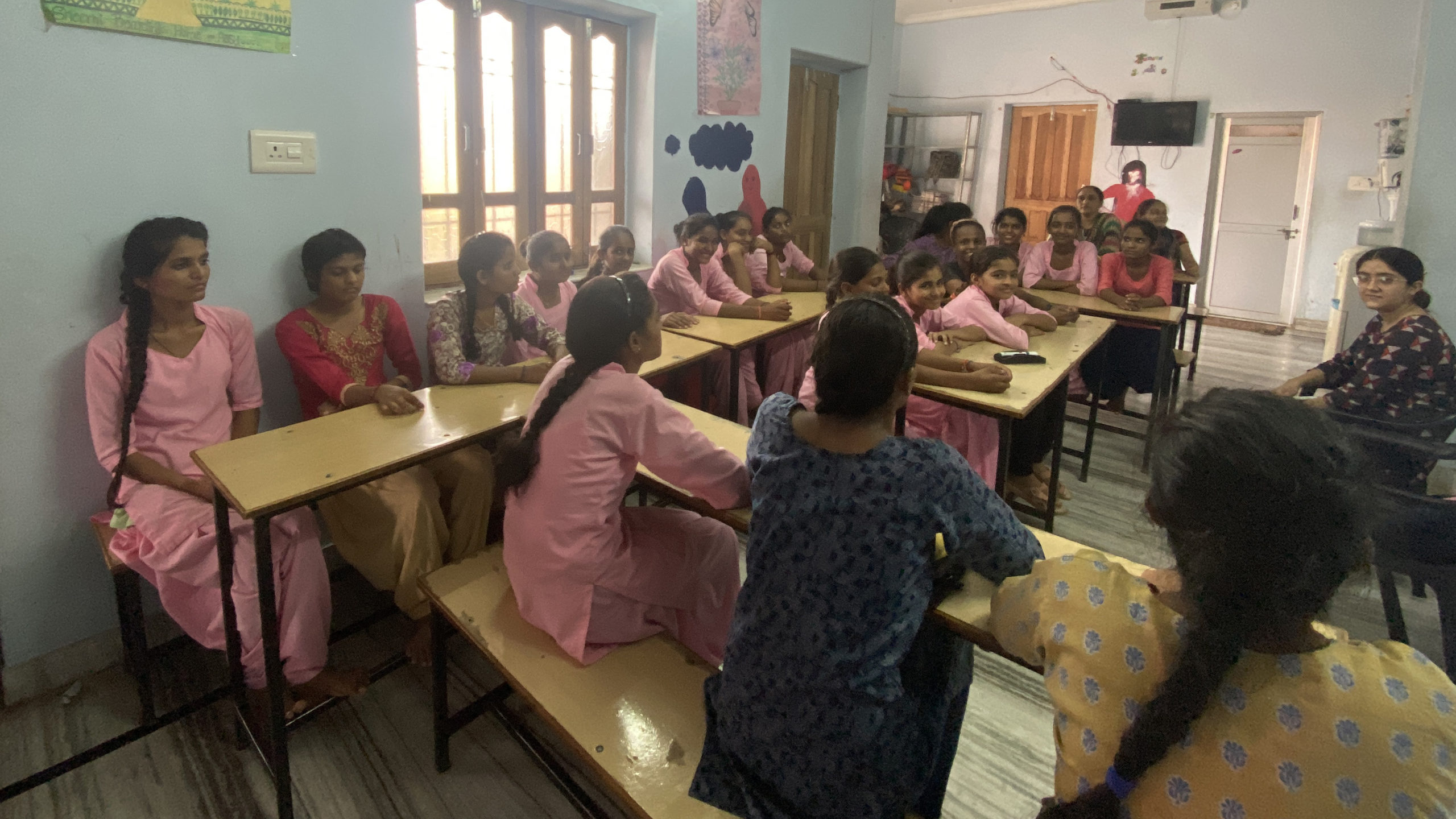
When I introduced myself to the girls, their excitement turned into curiosity about my work.
“So you write stories?” 7-year-old Pooja asked me.
I nodded and asked her, “What do you want to be when you grow up?”
She paused for a second, deep in thought. “A POLICEMAN!” she said. “So I can fight all the bad guys.”
Among the other girls, one wanted to be a doctor, another a jewelry designer. Everyone wanted to go to college.
But at 16, most of these girls will have to return to their villages to marry. Some are pulled from school even earlier, expected to look after younger brothers and sisters while their parents do menial work or scavenge for money.
One girl told me she dearly missed her cousin, who was forced to return to Setrawa from Laadli last year after her father lost his job. “She always helped me with homework,” she said. Now, the cousin spends her days at home helping her mother.
“Many underprivileged girls have the potential to be exceptional students but they aren’t given the opportunity or encouragement to discover their talents, especially if they live in rural areas,” Rathore said.
Hopes for the success of the Rajkumari Ratnavati Girls School in Jaisalmer are pinned on the investment of an entire community: the owner of a five-star hotel donated the four hectares of land on which the school was built, while the royal prince of Jaisalmer joined the school’s board of directors. The elite fashion designer Sabyasachi designed and donated the girls’ uniforms, while a Jaipur city-based company offered to install a canopy of solar panels on the roof. “We are very excited for the change we can create,” Jain said.
But among ambivalent villagers, any expectations for the school are being tempered by pandemic-related delays. “I didn’t think that school for girls was ever going to run,” a shopkeeper named Mohan Lal Singh said, shrugging. “But if it happens, it happens.”

